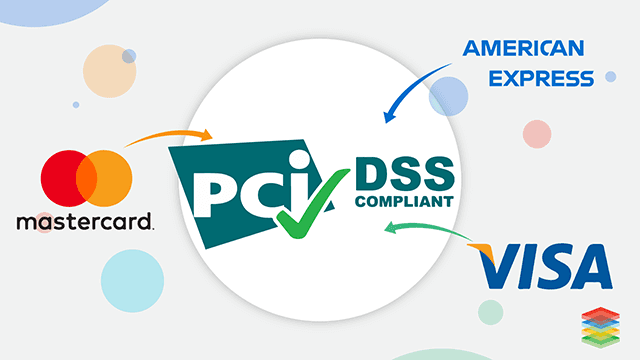In the realm of payment card security, maintaining the integrity and availability of data is paramount. The Payment Card Industry Data Security Standard (PCI DSS) outlines a comprehensive framework to ensure that businesses can effectively protect cardholder data.
Among its requirements, business continuity planning is a critical component. This article delves into the PCI DSS business continuity requirements, offering a detailed exploration of what they entail and how they align with broader industry standards.
What is a Business Continuity Plan?
A Business Continuity Plan (BCP) is a strategic framework designed to ensure that an organization can continue operating during and after a disruption. Whether facing natural disasters, cyber-attacks, or other unforeseen events, a BCP helps businesses maintain critical functions and minimize downtime.
The plan typically includes procedures for disaster recovery, communication strategies, and roles and responsibilities, ensuring that the organization can swiftly and efficiently recover from interruptions.
Concerned With PCI DSS Business Continuity
Yes, PCI DSS is significantly concerned with business continuity. The standard emphasizes the need for organizations to implement robust procedures that protect cardholder data in the event of a disruption.
Business continuity planning is crucial for maintaining compliance with PCI DSS requirements, which aim to safeguard payment systems and sensitive information against various threats. The PCI DSS ensures that businesses have a clear plan to handle incidents that could potentially compromise data security.
What Are The Steps for the PCI DSS Business Continuity Plan?
Creating an effective Business Continuity Plan involves several key steps, each designed to address different aspects of continuity and recovery. Here’s a breakdown of these essential steps:
Business Impact Analysis
The first step in developing a BCP is conducting a Business Impact Analysis (BIA). This process involves identifying critical business functions and assessing the potential impact of disruptions on these functions. By evaluating the effects of different types of disruptions, organizations can prioritize recovery efforts and allocate resources more effectively. The BIA helps understand which areas of the business are most vulnerable and requires focused attention.
Recovery Strategies
Once the impact analysis is complete, the next step is to develop recovery strategies. This involves creating detailed plans for restoring business operations and information systems to their normal state. Recovery strategies should address various scenarios, including data loss, system failures, and other emergencies. These strategies outline the processes for data backup, system restoration, and continuity of critical services, ensuring that the organization can quickly bounce back from disruptions.
Plan Development
With recovery strategies in place, the next phase is plan development. This step involves documenting the procedures, responsibilities, and resources needed to execute the recovery strategies. The plan should include specific actions to be taken during an incident, communication protocols, and roles assigned to team members. Comprehensive documentation ensures everyone knows their responsibilities and can act swiftly during a crisis.
Tests and Exercises
To ensure the effectiveness of the Business Continuity Plan, regular testing and exercises are essential. These tests simulate real-life scenarios to evaluate the plan’s efficiency and identify any gaps or weaknesses. Exercises help organizations refine their strategies, improve coordination among team members, and ensure that the plan remains relevant and effective. Regular testing also helps in updating the plan in response to new threats or changes in business operations.
What Are Business Continuity Standards?
Business continuity standards provide a framework for developing and implementing effective continuity plans. They outline best practices, methodologies, and requirements that organizations should follow to ensure resilience and recovery. Key standards include ISO 22301, which provides guidelines for business continuity management systems, and the National Institute of Standards and Technology (NIST) Special Publication 800-34, which offers guidance on IT contingency planning. These standards help organizations develop comprehensive BCPs that align with industry best practices.
Is PCI DSS Business Continuity Plan Required?
Yes, having a Business Continuity Plan is a requirement for PCI DSS compliance. The standard mandates that organizations must have documented procedures to maintain the security of cardholder data during a disruption. In addition to PCI DSS, other standards such as ISO 27001 and NIST also emphasize the importance of business continuity planning. Compliance with these standards ensures that organizations can protect sensitive information and maintain operational resilience in the face of various challenges.
What Does The Success Of The Business Continuity Plan Depend On?
The success of a Business Continuity Plan depends on several factors:
- Management Support: Effective business continuity planning requires strong support from senior management. Their commitment ensures that adequate resources are allocated and that the plan receives the attention it needs.
- Employee Training: All employees must be trained on their roles and responsibilities within the BCP. Regular training and awareness programs help ensure that everyone is prepared to act effectively during a disruption.
- Regular Testing: Ongoing testing and exercises are crucial for identifying potential weaknesses in the plan and making necessary adjustments. Regular testing helps keep the plan up-to-date and effective.
- Continuous Improvement: A successful BCP is a dynamic document that evolves with changes in the business environment and emerging threats. Continuous improvement and updates ensure that the plan remains relevant and effective.
In conclusion, the PCI DSS business continuity requirements are integral to maintaining the security and availability of payment systems and sensitive data. By implementing a robust PCI DSS business continuity plan and adhering to industry standards, organizations can enhance their resilience and ensure compliance with regulatory requirements.

